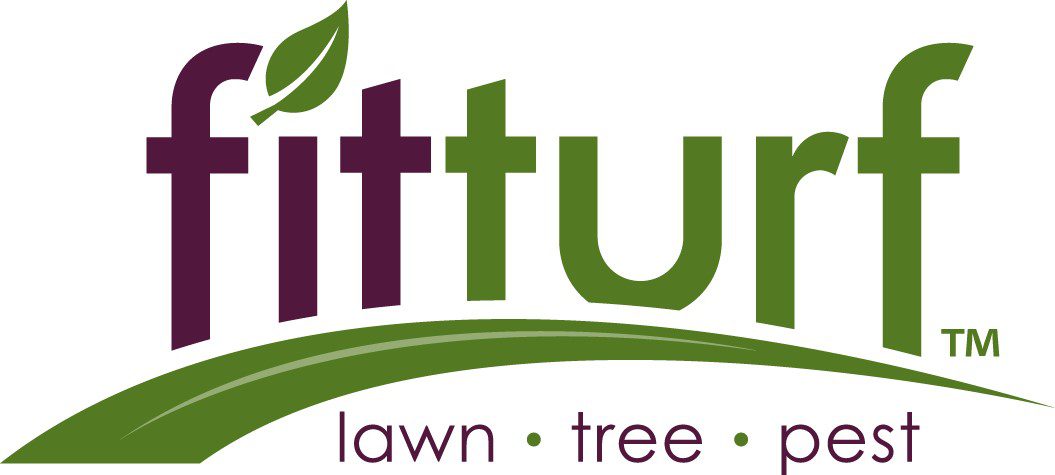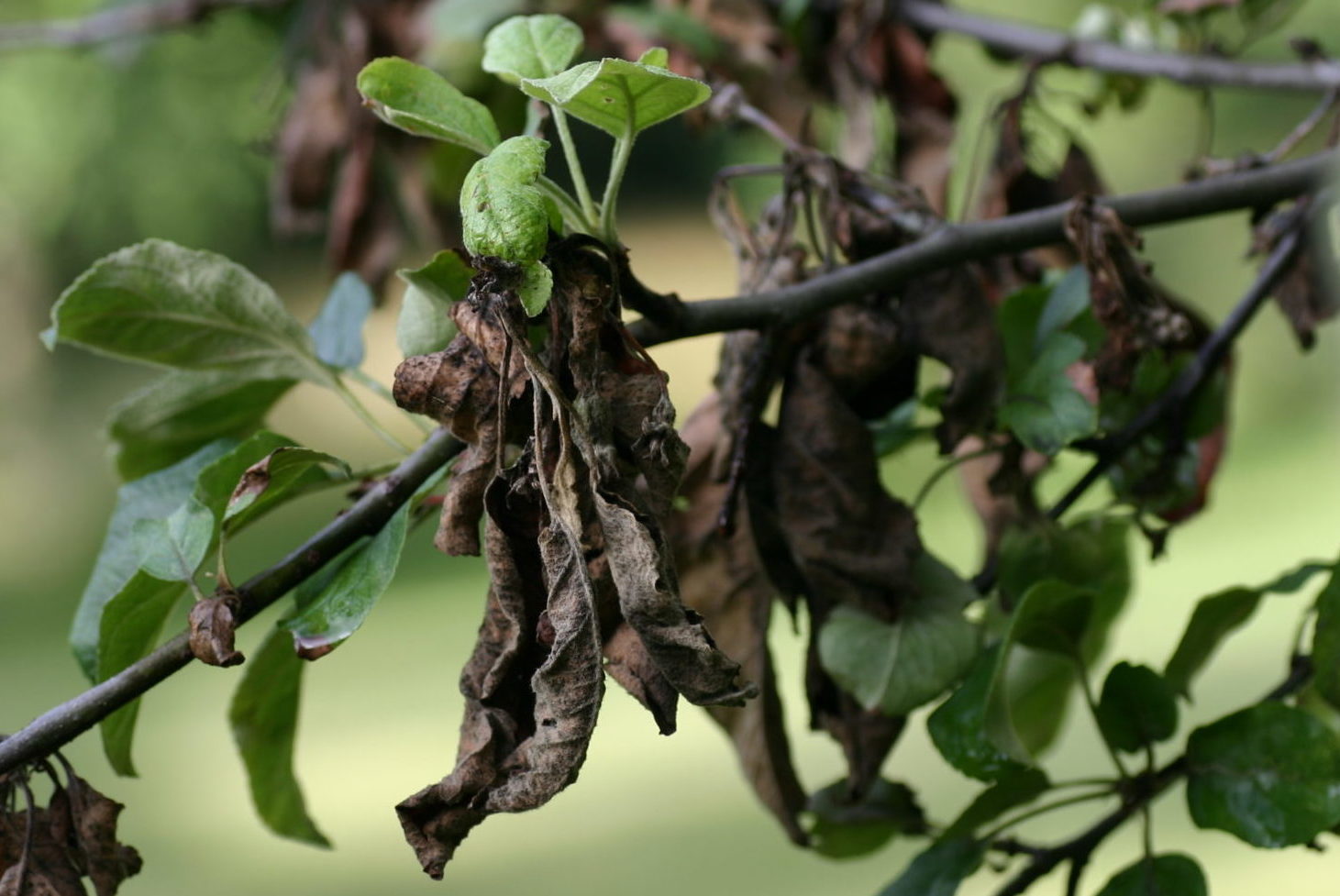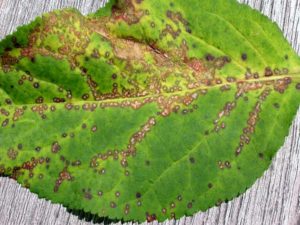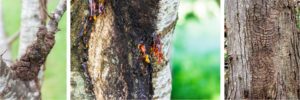Customer Support
303.221.6900At Fit Turf, our tree care professionals are passionate about healthy trees. Below, we’ve compiled a short guide to common tree diseases to help you better identify and prevent them on your property. Read on to learn more and contact our Colorado tree professionals for disease control and prevention services today!
Fire Blight
Fire blight is an especially destructive bacterial disease on plants such as apple, crabapple, pear and quince. Contributing factors include cool, wet weather; infected nursery stock; overhead sprinkler irrigation. In late spring, symptoms may be observed on blossoms, fruit, twigs, leaves, limbs, and the trunk. The pathogen generally enters the tree through wounds, natural openings in the leaves, or through flower parts. Bacteria in infected tissues lie dormant in late summer and remains so until the following spring.
SYMPTOMS
In late spring, symptoms may be observed on blossoms, fruit, twigs, leaves, limbs, and the trunk. The infection may progress down a shoot or small branch and start a stem canker in a larger branch or stem. The inner bark of these cankered areas appear water-soaked, turning green to brown. The surface withers and wrinkles. The infested bark often attracts more insect activity than normal. Dead leaves remain attached to dead branches.
MANAGEMENT
Several steps must be taken to manage and prevent this disease. It’s crucial that affected areas are removed. Prune dead or dying twigs and branches in the fall, using disinfected tools. Do the same in the spring, should an outbreak occur. Be sure not to over fertilize the tree, since that may accelerate bacterial growth. We recommend a fungicide injection at the first sign of outbreak, but preferably before for attempts at prevention on an annual basis. After the injection, the infected limbs and foliage already affected will not be repairable and will still require pruning. We also highly recommend a micro-injected antibiotic be done as well, which acts as a systemic aid in the suppression of this disease.
Apple Scab
Apple, crabapple, pear, firethorn and many other plants are hosts. Contributing factors include cool, wet weather. These spores are carried and spread by splashing rain to other leaves and fruits, where new infections occur. The disease may continue to develop and spread throughout summer.
SYMPTOMS
Symptoms first appear in the spring, developing necrotic spots on leaves. Spots begin as small, olive green circles, that become darker and more distinct with age.
MANAGEMENT
Remove fallen leaves, since they are the source of primary inoculum. Prevention is possible, but the fungicide injection must be performed during bud swell. After full leaf-out, the effectiveness is far less, if at all.
Anthracnose
Many deciduous trees and shrubs are hosts. Examples include ash, elm, maple, and sycamore. Contributing factors include warm, rainy or foggy late winter and early spring weather, overhead irrigation; dead branches and twigs in crown; masses of infected leaves overwintering on ground.
SYMPTOMS
Symptoms can be quite variable. Often considered to be a transition between leaf and stem disease. Spring buds do not mature because the tissue has been killed. During shoot elongation, infection causes wilting and death of growing shoots and immature leaves. The fungi cause them to produce cup-like fruiting structures. The spores are typically colorless, one-celled, an ovoid to oblong in shape.
MANAGEMENT
In the fall, prune dead branches and twigs, and destroy fallen leaves and shoots. Fit Tree offers a fungicide injection to manage this disease. In the fall, we also recommend a water-based fertilizer injection to increase tree vigor.
Canker
Several plants are hosts to canker diseases. Examples include aspen, cherry, elm, and honeylocust. There are several types of canker that exist in Colorado plants. Cankers are dead areas on the stem bark caused by fungi, bacteria, or other living agents. Insect borers are often found associated with cankers, since both organisms are found on stressed trees. Cankers can be fatal to plants, especially if the plant is stressed.
SYMPTOMS
Canker can appear in many forms. Some of the many symptoms include girdled twigs and branches, slightly sunken, dark, resinous, rough, yellowing and browning of foliage with gummy ooze at cankers, sparse leaves, yellow to red-brown spore horns, and expanding tissue.
MANAGEMENT
Please contact your local Fit Tree professional for proper diagnosis prior to creating a management plan; there are several types of canker, and often require different approaches. The best way to prevent something like this is to improve growing environments, reducing branch woulds.





